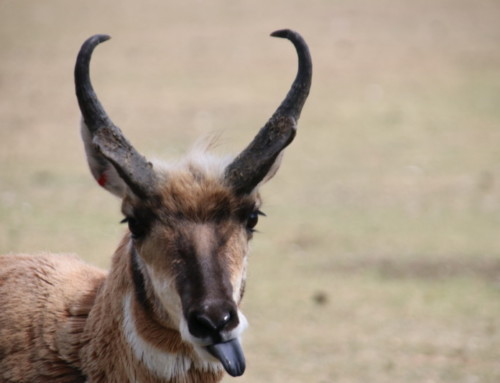Thamnophis sirtalis
“Hopper in the grass
Hiding from the birds above
Falls prey to the snake” © Abe Lopez 2008
Thamnophis (Greek thamnos – bush, ophios – serpent) sirtalis (Greek – like a garter, banded)
The Common Garter Snake is one of three species of Garter Snakes that may be found in Saskatchewan. Garter Snakes are thin-bodied, small-headed snakes perfect for gliding quickly through underbrush, grasses, reeds and shallow water. They range in size from 46 to 137 cm and weigh, on average 150 grams. Females are larger than the males and have shorter tails. They are highly variable in their colouration but usually have three light stripes that run the length of the body with various shades of black, grey, brown, or olive as background colour. They may also have alternating spots of darker colours that run along the stripes giving a checkerboard appearance.
They range throughout North America on the Great Plains from the Oklahoma panhandle, northern Texas and New Mexico up to southern Canada, from Quebec west to British Columbia. They are found in varied habitats but in Saskatchewan the favoured areas are moist places near water with plenty of cover from grasses and shrubs. This is where their prey animals are also found – frogs, toads, fish, grasshoppers, earthworms, crayfish, leeches, slugs, snails, insects and occasionally small mammals or baby birds. They are not affected by the sometimes poisonous skin secretions of some amphibians, and their own saliva has a low level of venom that may affect some prey but has no danger for humans from a snake bite. Their speed and sharp teeth are their best resources for catching prey.
As with all reptiles Garter Snakes are not able to easily regulate their body heat. Although they are active diurnally (during the day), if the morning is cool they will not be active until later when the sun warms them. Consequently, living in a place like Saskatchewan is a challenge with our long winters. What they must do is find a place below the frost level, secure from predators, perhaps surrounded by boulders with a small opening. The temperature in this place should not go below 3 or 4 degrees C. These hibernacula may shelter hundreds of garter snakes over our long, cold winters. (see links below)
In the Spring, as soon as they leave hibernation they are ready to mate. The males will leave the hibernaculum first and wait for the females to emerge. Then follows seeming pandemonium, with the males surrounding the females until they pick the mate they want, with the males giving off pheromones to attract a mate. After mating the female goes off to her summer habitat while the males may stay back to mate with other females. The females are able to store the sperm within their bodies without fertilising their eggs until they can find a proper habitat. A female who is not pleased with any of the males may not mate at all. After about two or three months, the young are born live. Average size is 10 to 40 young with larger females having larger litters. The young are on their own immediately. Sexual maturity is usually at 1.5 to 2 years of age. Lifespan in the wild probably averages two years since most of the young do not survive predators. Captive Garter snakes can live between 6 and 10 years.
https://www.youtube.com/watch?v=ZKFU9wCj8Mc
http://www.producer.com/2013/04/go-snake-seeing-at-historic-saskatchewan-site/
More information can be found here: http://animaldiversity.org/accounts/Thamnophis_sirtalis/

